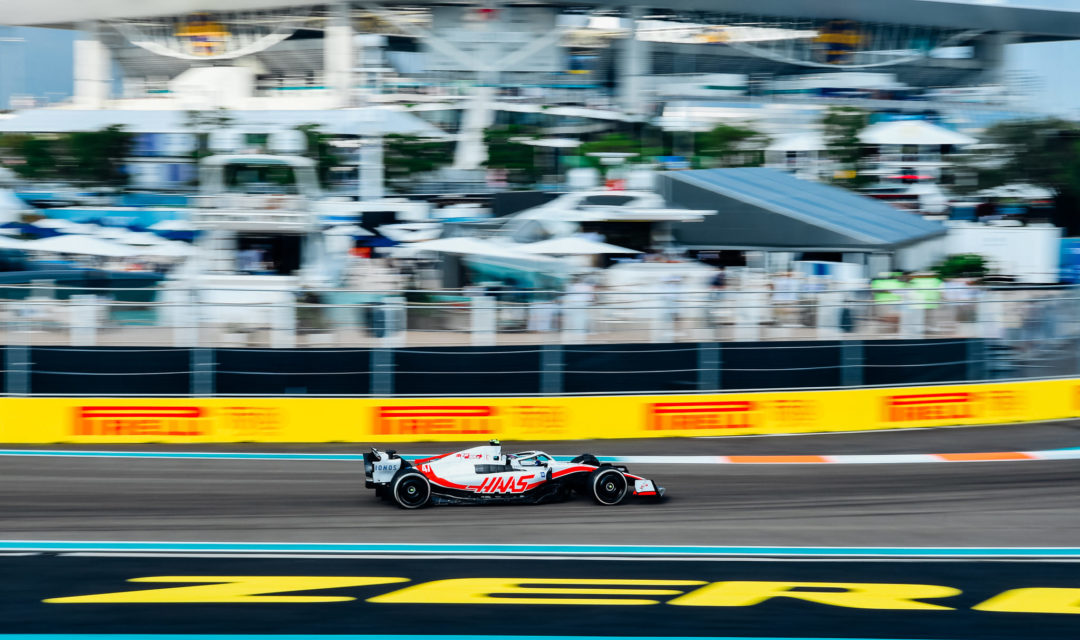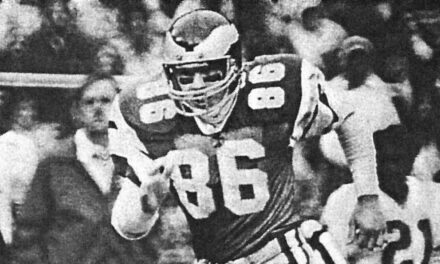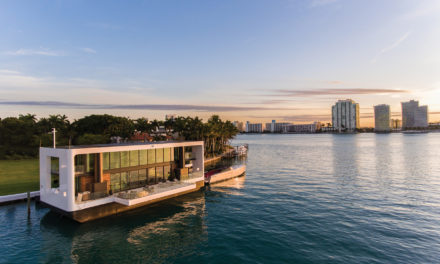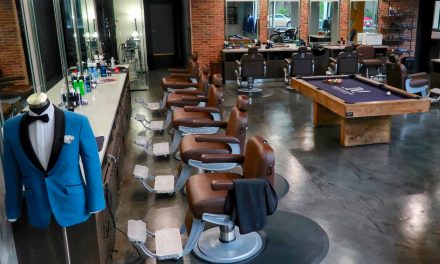Formula One and the city of Miami look like a match made in heaven so far, with the first Miami
Grand Prix event last May being a massive success on nearly every level. The city, the sport
and the Dolphins are working together to make this year’s event an even better one. MiamiMan
caught up with Tyler Epp, the President of the Miami Grand Prix, to tell us all about it.
A lot goes into hosting a party of over 200,000 for a weekend.
And as we learned last May, that’s exactly what makes Miami and Hard Rock Stadium the
perfect destination for a Formula 1 event.
Tyler Epp, President of the Miami Grand Prix, oversees it all. He says that while the stadium
location was initially chosen because downtown was too logistically difficult, it’s worked out
exceptionally well.
“When [Stadium owner] Stephen Ross and [Dolphins CEO] Tom Garfinkel developed a plan to
build a racetrack at Hard Rock Stadium,” he says, “it became an amazing opportunity to create
an event that is unlike anything else on the Formula 1 calendar.
“We basically had a blank sheet of paper to design an exciting track along with the campus, and
fan experiences that exist around it.” The track layout itself is designed to give F1 superstars a real challenge and give fans great
racing. “We have three straights, the longest being 1.28km in length, and three DRS [Drag Reduction
System] zones. Turn 4 is one of the most challenging sections, as the drivers turn in at about
300 km/h in top gear, but as they go through the corner, they’ll be shifting down to take Turn 5
and 6, and they will be pulling 5G laterally through this sequence. Turns 11 and 17 are some of
the best overtaking opportunities. Then there’s also Turn 1.”
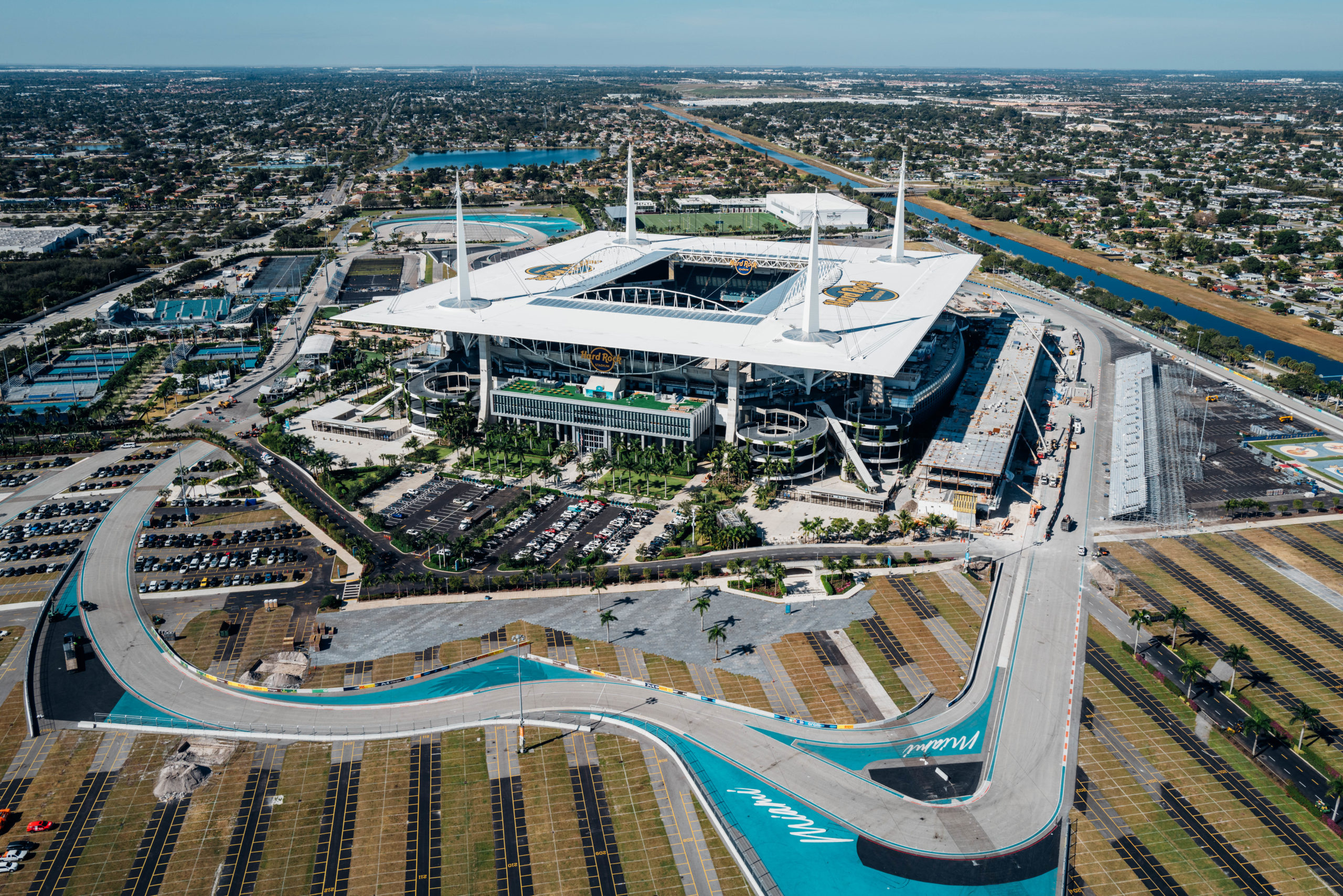
A football stadium parking lot doesn’t seem like an ideal racetrack location, but Epp and his
team turned it into an almost obvious advantage.
“Any fan coming to the race can access the 300 level, to see spectacular aerial views of the
track. New this year, fans can also go into the seats inside the stadium, view the race on the
video screens, and find shade, restrooms, and concessions.”
In addition, Epp says, inside fans can “look into the paddock village where the teams’ racing
operations are based and see drivers and engineers moving throughout the paddock.
It’s a behind-the-scenes look that does not exist anywhere else,” he proudly asserts.
“We wanted Hard Rock Stadium to become a global entertainment destination that showcases
the best Miami has to offer.”
It does take a lot of effort. For last year’s event, Epp recalls that “the biggest challenge, really,
was that we had a very tight timeline. We also have annual logistical challenges of trying to build
all of this around the Dolphins season, the Miami Open tennis tournament, and many other
events.
“We’ve challenged ourselves again this year by repaving the track, constructing a permanent
Paddock Club building, and getting all the seating and hospitality structures built around the
track. “It requires a lot of hard work and long hours by our amazing staff and vendors,” he continues.
“It takes a great team, which we have, and it’s truly a credit to them for bringing the campus to
life.”
Late Dolphins owner Joe Robbie’s stadium may not have been popular as the home of the
Marlins, but Robbie likely had it built with just this sort of thing in mind.
“The Dolphins are the reason we’re all here,” Epp says. “Without them, we wouldn’t have this
beautiful stadium that affords us the opportunity to put on such wonderful events.”
Max Verstappen’s thrilling victory in the inaugural Miami Grand Prix was very well received.
Sports Business Journal declared it the Best New Event of 2022, and it was an easy call.
The race drew 2.6 million viewers, the largest live audience for an F1 telecast in U.S. history.
Live attendance wasn’t too shabby either. According to the SBJ article, the crowd totaled 85,280
on race day, with 242,955 total for the weekend. In addition, the 15,000 hospitality guests
“included a nearly endless list of celebrities and luminaries.”
That’s plenty of encouragement to build on, which the Miami Grand Prix folks are doing for
2023’s event. For starters, they’re adding to the hospitality areas.
“Our premium 72 Club and invite-only Palm Club are partially based in the stadium,” Epp notes,
“and we’ve built out trackside seating for both right next to the podium. We’ve also invested in a
new permanent Paddock Club building, which sits right on top of the garages on the north side
of the stadium, for premium hospitality guests.”
They’re also taking advantage of the opportunities presented by last year’s experience.
“Now that we’ve had a year of racing and seen where some great views are, we’ve tried to
maximize opportunities for guests to see that. “We’ve added trackside viewing platforms for all campus pass holders along Turns 8 to 10.
The MIA Marina area spans the challenging section from Turns 4 to 6. We’ve created a new
hospitality option, the Boathouse, which has breathtaking views of the track.
“In our new Paddock Club, guests will be able to go up to the rooftop and see potential action
looking back at Turns 17 and 18, as well as be right on top of the start/finish straight with views
down towards Turn 1.”
That’s not to say they’re catering exclusively to VIPs, of course. There are some sweet
improvements around the stadium for motorsports fans. Like the new Race Street, where fans
can “view luxury car displays, street art by local artists, listen to music, and experience food and
beverage that showcases the Miami culture,” according to Epp.
“We’re also introducing Miami Grand Prix merchandise this year. For the motorsport enthusiast,
we will be welcoming Porsche Carrera Cup as our support series alongside F1, which will
feature an open paddock that is accessible to all fans.”
Parking for crowds this size can always be a potential detriment, but Epp’s team is working on
that, too.
“We’ve worked this year to expand our parking options, and to communicate this in advance, to
encourage guests to plan accordingly and make selections that best fit their needs to minimize
walking to and from the event.”
There’s an obvious reason politicians push for Super Bowls, All-Star Games, and other major
events to be held in their town. It employs an awful lot of people.
Epp is happy to cite statistics about the positive impact the Miami Grand Prix is having in the
Miami Gardens community.
“Last year we carried out an economic impact analysis that indicated more than 3,000 local
workers were paid in excess of $100 million, in the lead-up and during the event,” he states.
“Visitor spending in the Greater Miami area during race week reached over $150 million, with
the average visitor spending a total of $1,940.”
He adds that “14 minority-owned restaurants were featured throughout the campus, with the
opportunity to showcase their businesses and cuisine on a global platform.”
The Miami Grand Prix people dedicated themselves to outreach in Miami Gardens as well. As
Epp states, they’ve donated food to local shelters through Food Rescue U.S. South Florida,
Sodexo, and Turn 5 Kitchen.
They’ve also initiated an “F1 in Schools” program (where was this when we were kids?), through
the Miami Gardens Parks & Recreation Department and Seeking Education Empowers
Knowledge (S.E.E.K). The initiative, Epp notes, brought STEM education directly to Miami
Gardens students. They gave 12 internships to local students and 1,500 tickets to local
residents in 2022.
All of this, Epp says, is being continued and expanded in 2023. He is looking toward a bright
future all around.
“My hope is that we will soon be hosting people at the race who grew up in Miami Gardens,
went to our STEM education program, or participated in the MIA Academy as an intern, and
because they had the opportunity to experience motorsports in their hometown and learn
wonderful skills, they pursue a career in Formula 1. I don’t mean as drivers necessarily. They
could be engineers, marketing people, journalists.
“I truly believe the opportunities we’re providing the local youth today can positively impact their
lives and impact the future of Formula 1.”
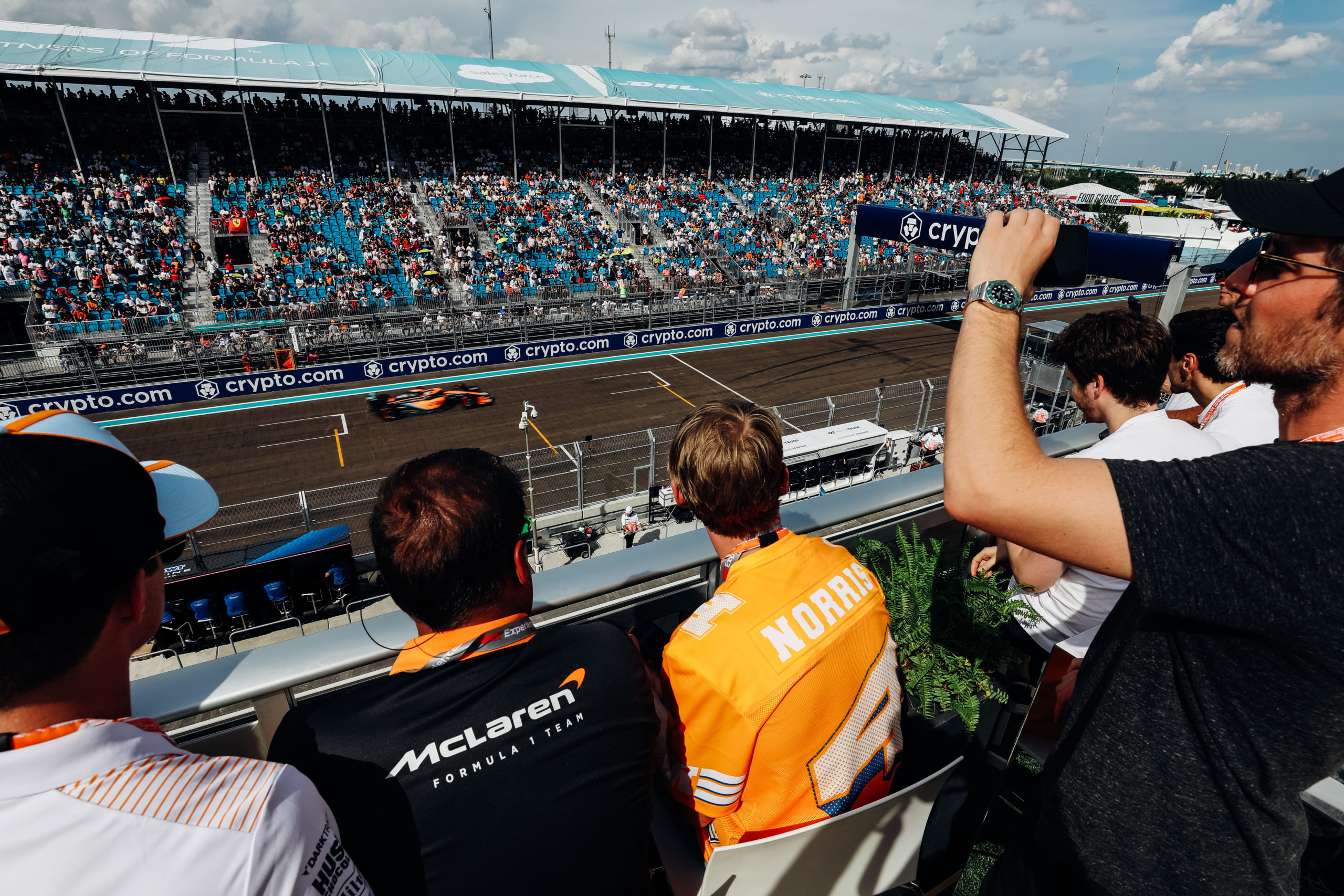
The Miami Grand Prix offers everything sports should…civic pride, outstanding competition, a
state-of-the-art facility, and a true benefit to the local community. Tyler Epp and his people have
plenty to be proud of so far.
“I am proud of a lot of things,” Epp says, “but the first one is the impact this race has had in the
South Florida community, both to this point but also in the future.”
Like any effective leader, he speaks glowingly of the team that makes it happen.
“This is not an easy event to pull off,” he says. “I’m constantly inspired by how this group of
people – not just that work at Hard Rock Stadium, but also all of these vendors and contractors
that we utilize in South Florida – can bring this world-class event to life in such a short period of
time, and create an awesome week of racing for drivers, teams and fans.
“It’s a rewarding moment when the lights go out and the race begins, but especially so knowing
all the work and heart that so many people poured into it.”

